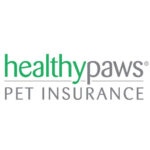Best Pet Insurance For Dachshunds In January, 2025
Drawing from my professional expertise, Healthy Paws emerges as the top option for pet insurance that is tailor-made for Dachshunds.
We’ve saved shoppers an average of $350 per year on their pet insurance.
Owning a Dachshunds makes you prioritize their well-being. Given their pedigree, Dachshunds have a heightened vulnerability to hereditary health issues compared to mixed-breeds. Alarmingly, a substantial 80% of pet owners find themselves ill-equipped to manage an unexpected veterinary bill of $500. This is where pet insurance takes on a crucial role, serving as a financial safety net.
In this comprehensive review, we will delve deep into pet insurance providers specializing in Dachshunds, equipping you to choose a policy that matches your distinct needs. Pet insurance functions much like personal health coverage, delivering better treatment choices while imposing an upper limit on potential out-of-pocket costs. Unlike individual health insurance, the cost if reasonable.
Best Pet Insurance Companies For Dachshunds 2025
Various pet insurance providers for Dachshunds share common attributes, in that they help to safeguard your pet's well-being and mitigate your financial exposure. However, there are also distinctions that set them apart. Therefore, the best choice for your neighbor's pet might not necessarily be the best one for yours.
Here's our analysis of the top pet insurance companies catering to Dachshunds:



Comparison Of The Best Pet Insurance Companies For Dachshunds
Based on our review of the best pet insurance providers for Dachshunds as mentioned earlier, it's clear that numerous respected companies are vying for the top spots. Additionally, you'll notice that each company comes with its distinct benefits. Here's a brief overview to offer you insight into each insurer:
| Overall Rating | Benefit Limit | Waiting Period | Best For | Reimbursement % | Get A Quote | |
|---|---|---|---|---|---|---|
| Lemonade |
|
$5,000 to $100,000 annually |
2 days accidents, 14 illness |
Cheap |
70%,80%,90% |
Instant Quote |
| Pumpkin |
|
$10,000, $20,000, or unlimited |
14 days accidents/illness |
Older Dogs |
90% |
Instant Quote |
| Healthy Paws |
|
Unlimited annual and lifetime |
15 days accident/illness |
Overall |
70%,80%,90% |
Instant Quote |
| ManyPets |
|
Unlimited annual and lifetime |
15 days accident/illness |
Puppies |
70% or 80% (most states) |
Instant Quote |
| Spot |
|
$2,500 to unlimited |
14 days accident/illness |
Multiple Pets |
70%,80%,90% |
Instant Quote |
Our Methodology
The evaluations and resulting ratings were developed through a comprehensive analysis of each insurer's websites, customer feedback, external review platforms, and personal familiarity gained from prior purchases and utilization of pet insurance.
Quotes Analyzed
Years Of Experience
Brands Reviewed
Research Hours
Detailed Reviews Of The Best Dachshunds Insurance Companies
Best Overall
Key Statistics
Why We Like Them
⇅Healthy Paws distinguishes itself as the top option for pet insurance, due to its lack of claim payout limits, per-incident maximums, or restrictive caps.
Though it may involve a higher cost, it’s worth it to avoid making challenging decisions with your pet’s life, influenced by policy limitations. Healthy Paws offers a simple policy structure, free from costly add-ons, and provides the freedom to consult any licensed veterinarian.
The claims submission process is streamlined through their user-friendly mobile app or website, and the majority of claims are efficiently addressed within a mere two days.
Benefits & Drawbacks
⇅- No limits on annual and lifetime payouts
- Swift processing of most claims within 48 hours
- Offers a 30-day money-back guarantee
- Possible option for direct vet payments ✓
- Does not include a routine wellness coverage choice ✘
Runner-Up for Best Overall
Key Statistics
Why We Like Them
⇅Lemonade stands out as the most cost-effective pet insurance choice for Dachshunds. While its coverage limits align with those of other reviewed companies, they differ from the unlimited coverage offered by Healthy Paws. Lemonade’s coverage ranges from $5,000 to $100,000 annually, with the premium increasing in line with the limit you select.
Lemonade’s standard policy encompasses accidents and illnesses, ranging from cancer and heart disease to skin conditions, fractures, and the prevalent concern of hip dysplasia in older Dachshunds.
Similar to the standard practice among insurers, Lemonade excludes coverage for preexisting conditions, dental problems, behavioral issues, and elective procedures.
Benefits & Drawbacks
⇅- You have the option to include a wellness plan if you choose.
- Enjoy a short waiting period of only two days for accident coverage.
- Get a 10% discount by bundling pet insurance with your current Lemonade home, renters, or car insurance. ✓
- There is no availability of a 24/7 pet telehealth line.
- Coverage for vet exam fees comes with an extra cost.
- Prescription food and microchipping are unfortunately not included in the policy. ✘
Best for Puppies
Key Statistics
Why We Like Them
⇅ManyPets excels in providing the best coverage for puppies. Rates remain unchanged by pre-existing conditions, and cured conditions may become eligible for coverage after 18 months. Furthermore, unrelated conditions can still meet the criteria for coverage.
Just like any young dogs, Dachshunds during their puppy phase are prone to various illnesses such as poisoning, ingestion of foreign objects, and accidents due to their exuberant energy. Securing coverage during their early stages considerably diminishes the chances of facing exclusions tied to pre-existing conditions as they grow older.
Benefits & Drawbacks
⇅- Available across more than 40 states for accessibility
- Covers veterinary examination fees for both illness and accident-related visits.
- Offers the option to select from wellness plans based on your preference. ✓
- Does not include a 24/7 pet telehealth line as part of the offering.
- Does not provide coverage for pet behavioral therapy, which is a limitation.
- Unfortunately, alternative therapies are not encompassed in the coverage. ✘
Best for Older Dogs
Key Statistics
Why We Like Them
⇅As Dachshunds get older, they can be susceptible to genetic health challenges like cruciate ligament problems and hip dysplasia, demanding costly treatments. Pumpkin sets itself apart by waiving waiting periods for these conditions and including coverage for veterinary exam fees for your senior Dachshunds.
Pumpkin offers a comprehensive selection of coverage choices, spanning a broad spectrum of potential issues that Dachshunds might confront, from surgical interventions to dental problems. You have the liberty to opt for one of three deductible options, and the usual reimbursement rate stands at 90%.
Benefits & Drawbacks
⇅- You are given the option to opt for an additional wellness plan.
- Receive discounts for insuring multiple pets, providing potential savings.
- Experience a noteworthy 90% reimbursement rate for dogs and cats aged 8 weeks and above. ✓
- There is no provision of a 24/7 pet telehealth line within the offering.
- Unfortunately, the availability of an accident-only plan is not present. ✘
Best for Multiple Pets
Key Statistics
Why We Like Them
⇅A significant number of Dachshunds owners tend to have multiple pets due to the breed’s friendly nature. Spot recognizes this and extends a 10% discount when you insure more than one pet with them, resulting in noteworthy savings.
Spot’s optional preventive care plan encompasses wellness necessities, encompassing an annual veterinary visit, a fecal test, and teeth cleaning. Certain vaccinations are also covered.
Moreover, Spot offers a 30-day money-back assurance if the coverage or service doesn’t align with your expectations. They also provide up to 90% reimbursement for qualifying veterinarian expenses and a round-the-clock vet helpline. Additionally, you have the liberty to consult any U.S.-licensed veterinarian or specialist.
Benefits & Drawbacks
⇅- Includes the benefit of microchipping services.
- Presents the choice of a wallet-friendly $100 deductible.
- Features a conveniently available 24/7 pet telehealth line for assistance. ✓
- Accidents entail a 14-day waiting period, which differs from the shorter 2-day waiting period seen in some prominent competitors. ✘
Average cost of pet insurance for Dachshunds
| Company | Monthly Price | Deductible | Annual Reimbursement % | Location | Age of Dog |
| Embrace | $49 | $500 | 90% | California (zip code 90210) | 2 year old |
| Figo | $41 | $500 | 90% | California (zip code 90210) | 2 year old |
| Fetch | $87 | $500 | 90% | California (zip code 90210) | 2 year old |
| Pumpkin | $53 | $500 | 90% | California (zip code 90210) | 2 year old |
| Odie | $44 | $500 | 90% | California (zip code 90210) | 2 year old |
| Lemonade | $27 | $500 | 90% | California (zip code 90210) | 2 year old |
Average cost of typical vet procedures
| Typical Vet Procedure | Average Cost Of Procedure |
| Annual exam | $240-600 |
| Teeth cleaning | $200-500 |
| Heartworm prevention | $24-120 |
| Spay or neuter surgery | $200-800 |
| Flea & tick prevention | $40-200 |
| Hip and knee dysplasia |
$125-500 |
| Microchip | $40 |
| Puppy vaccinations | $75-100 |
Average cost of emergency vet procedures
| Emergency Pet Procedure | Average Cost Of Procedure |
| 3-5 day hospitalization | $1,500-$3,500 |
| Ultrasound | $300-$600 |
| Oxygen therapy | $500 |
| General bloodwork | $80-200 |
| X-rays | $150-$250 |
| General consultation/exam | $100-$150 |
| Emergency surgery | $800-$2,500 |
| Wound treatment & repair | $800-$1,500 |
| 1-2 day hospitalization | $600-$1,700 |
Common health issues for Dachshunds
Health challenges are frequent occurrences in purebred dogs, including Dachshunds. Over the years, certain breeders have neglected genetic factors in their breeding endeavors, resulting in issues that impact the broader Dachshunds community.
In comparison to other breeds, Dachshunds typically exhibit a heightened vulnerability to genetic health issues.
Here, we present a compilation of prevalent health issues frequently encountered in Dachshunds:
- Intervertebral Disc Disease (IVDD)
- Obesity
- Dental Problems
- Eye Conditions
- Epilepsy
- Diabetes
Is pet insurance worth it for Dachshunds?
Pet insurance operates as a shield against unexpected veterinary expenses. While many devoted pet parents handle their furry friend’s medical bills, a substantial portion of Americans find it challenging to manage a sudden $1500 emergency vet charge. The right pet insurance acts as a safety line. It empowers you to make medical choices for your beloved pet driven by their well-being, unburdened by financial constraints.
The true value of pet insurance hinges on your individual expectations. If your pet is currently undergoing treatment for a chronic ailment and you’re seeking assistance with treatment costs, you might encounter some disappointment, as none of the companies we evaluated cover preexisting conditions.
However, if you have a clear understanding of your policy, its coverage scope, and you align it thoughtfully with your budget and specific needs, you’re more likely to perceive the policy as an investment worth considering.
How to find the best pet insurance company for you
Pet insurance plans available in the market vary in costs and features across different companies, adding a layer of complexity to the task of selecting the right one. To pinpoint the most suitable plan for your furry companion, consider these guidelines before finalizing your coverage:
Check whether your pet is eligible
For puppies and kittens, meeting the age threshold of 6 to 10 weeks is usually a requirement for insurance eligibility, varying by the company. Senior pets, on the other hand, could encounter enrollment restrictions with certain companies, potentially limiting them to accident coverage. However, after your pet’s enrollment, the majority of plans guarantee lifelong coverage, contingent upon your consistent premium payments.
Research what’s covered
Pet insurance plans generally cover expenses like surgeries, hospital stays, and medications in the event of illness or injury to your pet. However, there are specific aspects that some companies might charge extra for or omit from coverage. Here are a few instances:
- Exam fees: Consider your dog breaking a leg. While certain plans may reimburse expenses for X-rays, surgery, and pain medication, they might exclude coverage for the veterinarian’s examination fee.
- Alternative treatments and rehabilitation: Some companies include coverage for practices like acupuncture and physical therapy in their standard plans, while others might require an additional fee.
- Behavioral therapies: Not all policies extend to veterinary treatment for behavioral issues such as aggression.
- Prescription food: Some plans might not include coverage for prescribed food or supplements, even if recommended by your vet for a covered condition.
- Dental care: Pet insurance plans differ in their approach to dental health. Some may not cover dental problems like gingivitis or periodontal disease. Alternatively, coverage might depend on recent tooth cleaning. Certain wellness add-ons might include coverage for cleanings.
Remember, pet insurance policies typically exclude pre-existing conditions, cosmetic procedures, and breeding expenses from their coverage.
Decide how much coverage you want
Most pet insurance plans establish an annual payout limit, though a few come without an annual cap. It’s your decision to figure out the amount that provides you with a reassuring feeling of financial security regarding veterinary expenses.
When your dog or cat is in good health, you could go through years without facing expenses beyond routine care. Nevertheless, unexpected surgeries or serious illnesses could lead to accumulated costs reaching thousands of dollars.
Understand reimbursements and deductibles
The majority of pet insurance plans operate on a reimbursement basis, wherein a percentage of your veterinary bill is refunded. When obtaining the plan, you typically have the option to choose a reimbursement level like 70%, 80%, or 90%.
In contrast, certain plans adopt the insurance company’s predefined fee for specific treatments, which might be lower than your vet’s charges. This means you would need to cover the difference in cost.
Most plans also include a deductible— the initial amount you pay out of pocket before the policy kicks in. You usually have a range of deductible options, such as $100, $250, or higher. Some plans apply deductibles for each treated injury or illness, while others require you to meet the deductible once per year.
In general, there’s a trade-off between your out-of-pocket costs and the cost of coverage. Opting for a lower deductible and a higher reimbursement rate could lead to a higher premium, while choosing a higher deductible and a lower reimbursement rate might result in a lower premium.
Check waiting periods
The majority of plans incorporate short waiting periods immediately after obtaining the policy for general accident and illness coverage, typically around 14 days. Throughout this waiting period, treatments aren’t covered by the plan.
However, for specific conditions such as cruciate ligament injuries, certain plans impose extended waiting periods. These ligaments are vital for knee stability, and injuries to them can severely impact a dog’s ability to move comfortably.
Examine extra costs
Certain pet insurance providers include coverage for routine services such as wellness check-ups and vaccinations. While this might sound enticing, it’s crucial to assess whether the added cost brings real value. Compare the annual expense of the wellness insurance plan with what you would individually spend each year for the covered services. Pay close attention to the details, as the elements classified as “wellness” can vary across different pet insurance companies.
Compare Quotes
Insurance costs vary depending on the provider and the extent of coverage. Some pet insurance companies offer discounts; insuring multiple pets might lead to potential savings. However, a discount by itself doesn’t guarantee that a plan is the best option.
To discover the most fitting insurance for your pet, it’s essential to dive into the details and gather quotes from different plans. Make sure you’re conducting a fair comparison, considering similar coverage levels, deductibles, and reimbursement limits.
Factors that impact cost of your pet insurance policy
Much akin to your health insurance, the cost of your pet’s coverage can sway based on specific elements, such as:
- Geographic Location: Pet insurance providers take into account the local veterinary costs when determining the price of your policy.
- Pet’s Age: As pets age, the likelihood of health issues rises, often translating to higher premiums.
- Pet’s Breed: Different breeds carry varying susceptibilities to health concerns. Breeds like bulldogs and Boston terriers frequently encounter breathing challenges, whereas larger breeds like Dachshunds have an elevated risk of hip dysplasia. These considerations can play into the overall cost of your pet insurance plan.
- Deductibles, Coinsurance, and Coverage Limits: Your willingness to contribute out of pocket affects your insurance premium. Opting for a lower deductible, like $100 instead of $500, means faster reimbursements for your pet’s care, but with a trade-off of higher premiums.
Information about Dachshunds
Recognized for their intelligence and adaptability, Dachshunds hold a special place as a beloved dog breed. Hailing from Germany, they initially excelled as skilled hunters, utilizing their unique elongated bodies to trail and capture prey. With a distinctive coat, Dachshunds display an array of colors, including the well-known red and black variety.
Lively and social, Dachshunds thrive in active homes and enjoy outdoor adventures. Their acute sense of smell and natural instinct make them exceptional scent trackers. Establishing strong connections with their owners, Dachshunds showcase both loyalty and affection. With their characteristic confidence and versatility, Dachshunds remain a treasured breed, celebrated for their exceptional qualities worldwide.
Looking For Pet Insurance For Other Dog Breeds?
FAQs
Is pet insurance cheaper for purebred dogs?
Due to their increased likelihood of genetic susceptibilities to costly health issues, insuring purebred dogs tends to come with higher expenses than insuring mixed-breed dogs.
What is the average cost of owning a Dachshunds?
In the first year, the initial costs add up to about $3,000, including vaccinations, food, grooming, and insurance. But in the following years, the annual expenses decrease to approximately $1,900.
What insurance do you need for a dog?
It’s a wise move for dog owners to have some form of pet insurance. This way, they can effectively handle veterinary expenses and keep their furry friend’s health and well-being in check.
Sources
⇅